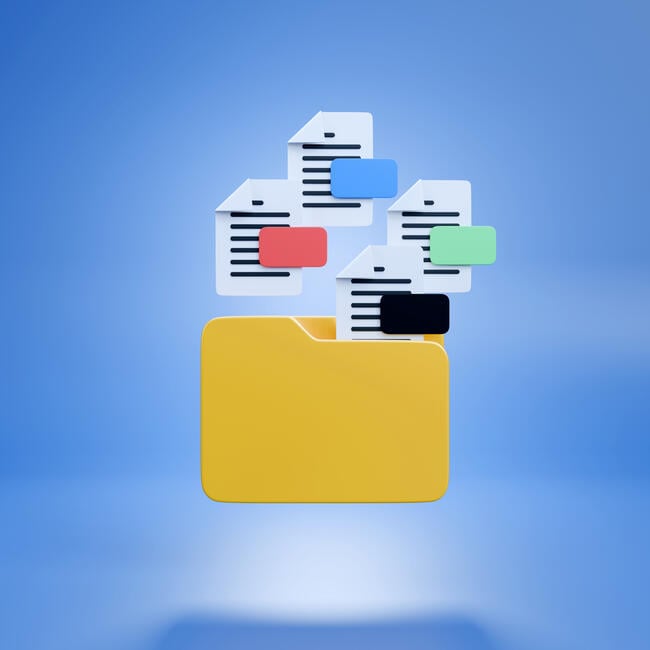You have /5 articles left.
Sign up for a free account or log in.

taylanibrahim/iStock/Getty Images Plus
The start of the academic year can feel like a sprint. Syllabi need finalizing, course sites require building and the emails about room assignments, wait lists and policy changes keep coming. Within a week or two, grading begins and committee work is in full swing. In this flurry of activity, research often gets pushed to the back burner—after all, teaching is immovable and research is “flexible.”
That’s exactly why now is the perfect time to set up—or overhaul—your research project management system. Done right, such a system can help you work consistently and effectively during the busiest months, even when you have only 20 minutes a day to spare. A good system keeps your projects moving forward, helps you feel more in control and allows you to jump into a task without losing time to “Where did I save that file?” or “Which draft was the latest?”
You might think of research organization as a summer project—something to do when classes aren’t in session and the calendar feels more open. But summer has its own distractions and deadlines, and the momentum you build then can be hard to carry into the academic year without a clear system. By starting now, you’re designing your research life for the actual conditions under which you’ll be working for the next nine months.
What Do I Mean by ‘Research Project Management System’?
Your research project management system is a set of relationships among your tools, actions and plans that allow you to organize and carry out your work efficiently. This isn’t just a single app or piece of software (those are tools)—it’s a way of structuring your research life so that you can:
- Find what you need quickly
- Keep track of decisions and progress
- Adapt when things change
Your system might include nested parts—for example:
- A process for coding qualitative data
- A protocol for cleaning quantitative data sets
- A filing method for grant receipts or institutional review board paperwork
The form matters less than the function. Your system should be accurate, legible to you (and future collaborators), and tailored to your goals. It’s the map, not the territory—but a good map can save you a lot of wandering.
Why It Matters—for Both the Research and the Researcher
Good project management benefits the quality of your work by:
- Documenting your methods so they’re transparent and reproducible
- Reducing mistakes caused by faulty memory or poor recordkeeping
- Helping you choose and use the right tools for each task
It also benefits you. When your system is clear, you’re not lying awake wondering where you saved that conference abstract or whether you ever finished that robustness check. You can respond to unexpected opportunities—a sudden call for papers, a potential collaboration—without chaos. And you can recover more quickly from setbacks, whether they’re logistical (a lost file) or structural (a research interruption outside your control). Those interruptions increasingly involve broader forces—from attacks on higher education to long-standing structural inequalities that shape who has the time, support and resources to keep their research moving.
I’ve seen scholars lose weeks spent relocating data files, rerunning analyses they couldn’t quite replicate or reconstructing travel receipts for a grant report. Those aren’t moral failings—they’re predictable outcomes of working without a system.
3 Steps to Get You Started Building Your System
- Clarify Your Priorities, Goals and Commitments
Your system should serve your research priorities, not just institutional demands. Start by identifying your scholarly goals and ethical commitments.
For example, you might prioritize equity. But what does that mean to you?
- Do you want to co-author with students?
- Do you aim to publish open access?
- Do you want to make your data sets public?
Write these down. They’re your North Star when deciding how to structure your workflow. If equity is a value for you, your system might include a clear plan for recruiting diverse collaborators or building in time to mentor early-career scholars. If accessibility matters, you might choose tools that are low-cost or widely available, so others can adopt them.
- Choose Tools That Work for You
Tools aren’t systems, but they’re an important part of them. They can be digital or analog, simple or complex. A pen and notebook, a citation manager, a shared drive—all can be part of a functional system if they’re the right fit.
Pick tools that suit your habits, budget and institutional constraints—and be willing to change when something’s not working. If you dread opening a program, that’s a sign to find an alternative. Sometimes the problem isn’t the tool itself, but how it’s integrated (or not) into your larger process.
- Build In Time to Review and Adjust
Set aside regular check-ins—with yourself or collaborators—to see what’s working and what’s not. Name problems, however small, so you can fix them before they derail progress.
Mine happen weekly on Friday afternoons and include:
- Listing what I accomplished that week
- Noting any obstacles that slowed me down
- Adjusting next week’s plan accordingly
Schedule these sessions in advance. They’re far more likely to happen if they’re on your calendar with a time and place attached.
Why Now?
Yes, the beginning of the year is hectic. But it’s also when we’re setting habits and routines. If you integrate research organization alongside your teaching prep, you’ll be more likely to sustain both throughout the term.
No individual research project management system will solve structural inequities or publication pressures. It won’t fix unrealistic workloads or perverse incentives. But a well-designed one can give you more control over your workday and peace of mind about your projects—and that’s worth the time investment now, before midterm chaos hits.
You don’t have to do it all at once. Start small: Clean up one project folder, start or update your research project log, schedule a single weekly review session. The goal isn’t perfection—it’s making your research life more manageable, more transparent and, ultimately, more rewarding. If you can harness the energy of the year’s start and integrate your research plans alongside teaching and service, you’ll emerge with a system that keeps you organized, accountable and ready for whatever comes next.



